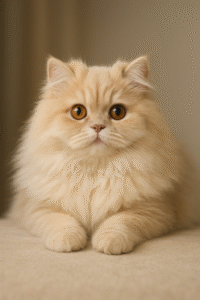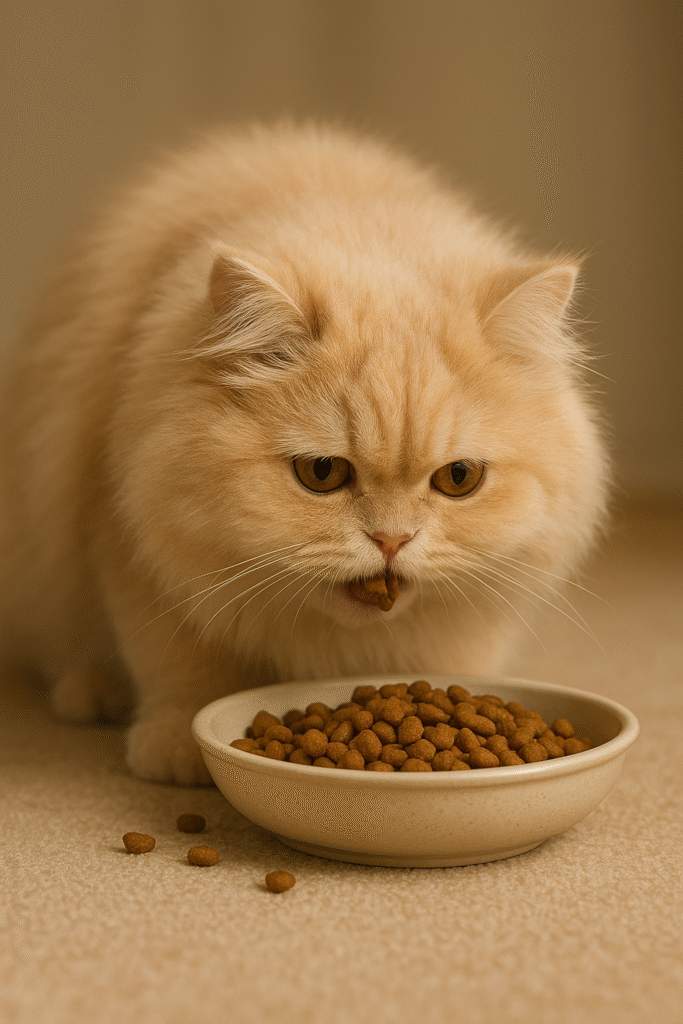History and Origins: From Ancient Persia to Victorian England
The Persian cat’s origins are deeply rooted in antiquity, with records and carvings suggesting the existence of long-haired cats in Mesopotamia, later Persia, as far back as 1684 BC. However, the official documentation of the breed’s arrival in Europe dates back to the early 17th century. The Italian traveler and nobleman Pietro della Valle is often credited with bringing the first long-haired cats from Persia to Europe around 1620. Simultaneously, a similar long-haired cat, the Angora, was being imported from Turkey, and for a time, the lines between the two were blurred.
The Persian quickly captured the attention of European nobility. King Louis XV of France was known to favor them, but it was in Victorian England that the breed truly solidified its status and identity. Queen Victoria, an avid animal lover, owned several blue Persians, greatly contributing to their fashionable appeal among the British upper class. This royal endorsement catapulted the Persian into the spotlight, leading to increased breeding efforts and the refinement of the breed standard.
A pivotal moment in the Persian cat’s history occurred in 1871 at the Crystal Palace Cat Show in London, the first organized cat show in the world. Persian cats were star attractions, with a Persian kitten famously winning “Best in Show.” This event marked the beginning of modern cat fancy and pedigree breeding. Over the ensuing decades, selective breeding in both Europe and the United States, where the breed arrived in the late 19th century, led to the development of the distinct “Peke-face” or “ultra-type” Persian, characterized by its extremely flattened face, which diverged from the more pointed “doll-face” or “traditional” Persian of earlier times. The CFA officially recognized the Persian cat in 1906, solidifying its place as a foundation breed and the most popular pedigreed cat in the United States for many years .Trending dog videoshttps://thepetsunivers.com/dogs-loyal-companions-and-loving-friends/
Physical Characteristics and Breed Standards
The Persian cat is instantly recognizable due to a few key physical attributes, which together create its iconic look. It is a medium-to-large sized cat, typically weighing between 7 and 12 pounds. The body is described as “cobby”—short, stocky, and well-rounded, supported by short, thick, and muscular legs. The chest is broad, and the neck is short and thick, complementing the overall sturdy build. their ability to connect with humans on a deep emotional level.
Head and Facial Features: The most defining characteristic is the head. It is massive and round, set on the short neck. The ears are small, round-tipped, and set low and wide apart on the head, often adorned with long tufts of hair. The eyes are large, round, and expressive, giving the cat a sweet, open look, and their color is often deep copper, blue, or green, correlated with the coat color. The nose is short and snubbed, with the classic “Peke-face” or “ultra-type” standard emphasizing the flatness of the face, where the nose break is directly between the eyes. This brachycephalic structure, while desired in the show ring, is also the source of some of the breed’s most significant health considerations. The traditional “doll-face” Persian maintains a less-flattened face with a slightly more protruding muzzle, closer to the look of their ancestors.
Coat and Color Divisions: The Persian possesses a magnificent double coat, one of the longest and densest of all cat breeds. It is long, thick, and glossy, with a dense, woolly undercoat that adds volume and requires rigorous daily maintenance. The coat forms a noticeable ruff around the neck and a substantial frill between the front legs. The breed boasts the widest array of coat colors and patterns in the cat fancy, grouped into seven official color divisions for competition: Solid (e.g., White, Black, Blue), Silver and Golden (e.g., Chinchilla, Shaded Silver), Smoke and Tabby, Parti-Color (e.g., Tortoiseshell, Calico), Bicolor, Himalayan (colorpoint), and Shaded and Smoke. This diversity means that a Persian can be found in virtually any color combination imaginable, adding to the breed’s widespread appeal.

Temperament and Personality
Despite their regal appearance, the Persian cat is renowned for its gentle, placid, and sweet temperament, making it an ideal indoor companion. They are fundamentally a calm and quiet breed, perfectly content to lounge gracefully on a comfortable chair or curl up on their owner’s lap, earning them the affectionate moniker of “furniture with fur.” Their energy level is low, and they prefer quiet admiration to boisterous activity.
Social Nature and Vocalization: Persians are affectionate but not overly demanding. They enjoy human companionship and are fiercely devoted to their families, often greeting their owners with a quiet, musical, and soft chirp or meow—their vocalization level is notably low. While they love to be near their people, they are also independent enough to entertain themselves or relax quietly when their owners are busy. They are selective about who they show affection to, often reserved around strangers, preferring to observe from a distance until they feel comfortable.
Compatibility with Others: Due to their docile and gentle nature, Persian cats generally get along well with respectful children and laid-back dogs or other cats, provided introductions are managed properly. However, their reluctance for loud, rough play means they are best suited for quieter homes. They are not known for being high climbers or jumpers, preferring to keep all four paws firmly planted on the ground. Their overall calm disposition makes them highly adaptable to apartment living and stable environments. They thrive on routine and can be sensitive to sudden, significant changes in their surroundings.
Grooming, Health, and Special Care Needs
The Persian cat’s signature long coat and brachycephalic facial structure necessitate a high level of commitment to their daily care, distinguishing them as a high-maintenance breed.
Grooming Requirements: The luxurious coat requires daily grooming to prevent matting and tangles, which can quickly become painful and lead to skin issues. A daily routine involving a wide-toothed comb followed by a slicker brush is essential to remove loose hair and keep the undercoat from clumping. In addition to daily brushing, Persians benefit from regular bathing—monthly or bi-weekly—to maintain a healthy, oil-free coat and prevent skin problems. Many owners opt for a “lion cut” or close trim, especially in warmer climates, for easier management.
Facial and Eye Care: Due to their flat faces and often malformed tear ducts, Persians are prone to excessive tearing (epiphora), which can cause tear stains (dark streaks) beneath the eyes, particularly noticeable on lighter-colored cats. The facial folds and eye area must be wiped daily with a soft, damp cloth or a vet-approved tear-stain solution to prevent staining and potential skin irritation. The brachycephalic structure also makes them heat sensitive, requiring them to be kept indoors in a climate-controlled environment, especially during warm weather.
Health Concerns: As a breed with a distinct, often exaggerated physical type, Persians are susceptible to several hereditary health conditions.
- Respiratory Issues: The flattened face can lead to Brachycephalic Airway Obstruction Syndrome (BAOS), which includes conditions like stenotic nares (pinched nostrils) and an elongated soft palate, causing breathing difficulties and snoring.
- Polycystic Kidney Disease (PKD): This is a genetic disease that causes cysts to form in the kidneys, potentially leading to kidney failure. Responsible breeders screen their cats for PKD through DNA testing or ultrasound.
- Eye and Dental Problems: Besides excessive tearing, Persians can suffer from entropion (inward-folding eyelids) and other corneal issues. Their short jaw can also lead to malocclusion (misaligned teeth), which requires regular dental care and often necessitates specially shaped kibble to facilitate easy eating.
- Gastrointestinal Sensitivity: Some Persians can have sensitive digestive systems, requiring careful attention to their diet.
In conclusion, the Persian cat is a magnificent, gentle, and loving companion whose beauty comes with a responsibility. An owner must be prepared for the dedication required for their extensive grooming needs and proactive health management. For the right family—one that can provide a quiet, stable home environment and is committed to their daily care—the Persian cat offers unparalleled, calm, and devoted companionship for their relatively long lifespan of 15 to 20 years. Their enduring popularity is a testament to the profound connection they form with their human admirers.

